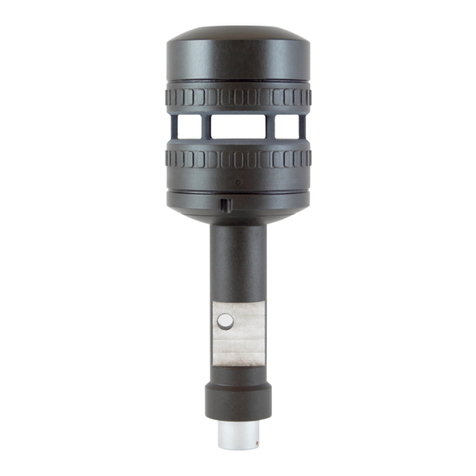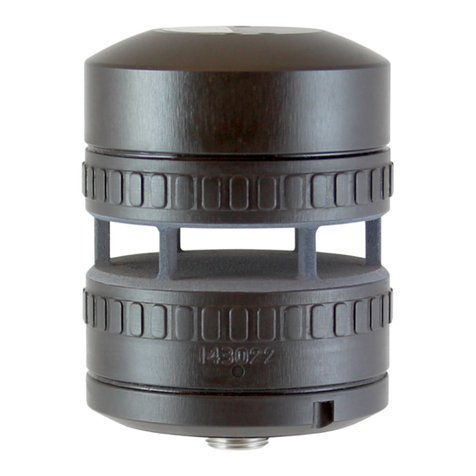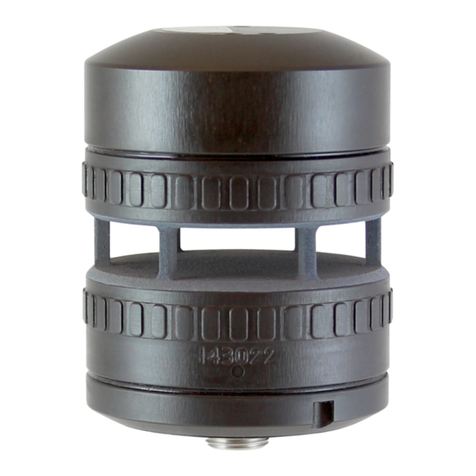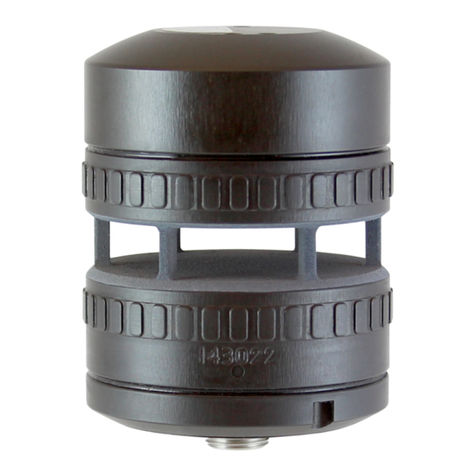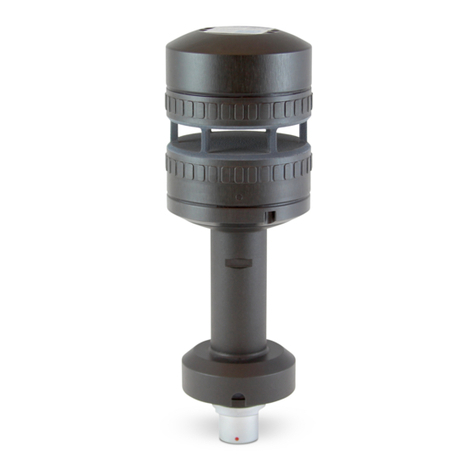3FT205EV Wind Sensors –User Manual
5.5 Communication..................................................................................................................35
5.5.1 Conventions used in this manual ....................................................................................35
5.5.2 Data Transmission ..........................................................................................................36
5.5.3 Message Format..............................................................................................................36
5.5.4 Listener and Talker Identifiers.........................................................................................37
5.5.5 Calculating the Message Checksum...............................................................................37
5.5.6 Disabling the Checksum..................................................................................................37
6PARAMETER SETTINGS ................................................................................39
6.1 Command Types................................................................................................................39
6.1.1 Set Commands................................................................................................................39
6.1.2 Query Commands ...........................................................................................................40
6.2 User Calibration Table.......................................................................................................41
6.3 Timing Constraints............................................................................................................42
6.4 Command Parameters.......................................................................................................43
6.4.1 AM: Set or Query Anemometer Mount Orientation .........................................................43
6.4.2 AT.1: Query the Acoustic Temperature...........................................................................44
6.4.3 AT.2: Set or Query the Acoustic Temperature Units.......................................................45
6.4.4 AT.3 Set or Query the Acoustic Temperature Filter Length............................................46
6.4.5 BR: Set or Query the Serial Interface Baud Rate............................................................47
6.4.6 CF: Set or Query the Wind Compass Settings................................................................48
6.4.7 CI: Set or Query the Communication Interface (RS485, RS422, UART)........................50
6.4.8 CU: Set or Query the Continuous Update Setting...........................................................51
6.4.9 DF: Set or Query the Wind Velocity Data Format...........................................................52
6.4.10 DG: Query the Run-time Counter ...............................................................................54
6.4.11 DL: Set or Query the Command Delay Interval ..........................................................55
6.4.12 ER: Query or Reset the Error Report..........................................................................56
6.4.13 FL.1: Set or Query General Filter Settings .................................................................57
6.4.14 FL.2: Set or Query Filter Lengths................................................................................58
6.4.15 FL.3: Set or Query the Selective Filter........................................................................59
6.4.16 HT.1: Query Heater Settings......................................................................................60
6.4.17 ID: Set or Query the Listener & Talker Identifiers.......................................................61
6.4.18 MM: Reset or Query the Min/Max Recorded Wind Speed..........................................62
6.4.19 OS: Set or Query Overspeed Warning Scheme........................................................63
6.4.20 RS: Reset the Sensor .................................................................................................64
6.4.21 SN: Query the Serial Number and Platform Version ..................................................65
6.4.22 SV: Query the Software Version.................................................................................66
6.4.23 UC.1: Set or Query the General User Calibration Settings.........................................67
6.4.24 UC.2: Clear User Calibration Table Record................................................................68
6.4.25 UC.3: Set User Calibration Table Record...................................................................69
6.4.26 UC.4: Save and Read User Calibration Table............................................................70
6.4.27 UC.5: Set & Query User Calibration Table Label .......................................................71
6.4.28 US: Set or Query Saved Parameters..........................................................................72
6.4.29 WV Polar: Query the Wind Velocity Reading..............................................................74
6.4.30 WV NMEA: Query the Wind Velocity Reading............................................................76

